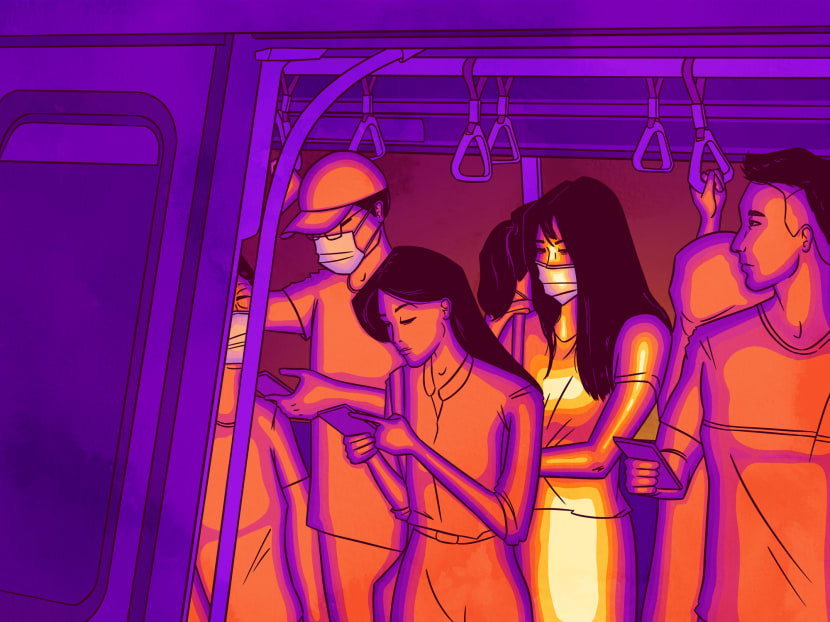The Big Read in short: Fighting the Wuhan coronavirus with lessons from Sars crisis
Each week, TODAY’s long-running Big Read series delves into trends and issues that matter. This week, we look at Singapore’s preparedness in the early days of the Wuhan coronavirus outbreak. This is a shortened version of the full feature, which can be found here.
Each week, TODAY’s long-running Big Read series delves into trends and issues that matter. This week, we look at Singapore’s preparedness in the early days of the Wuhan coronavirus outbreak. This is a shortened version of the full feature, which can be found here.
SINGAPORE — Like many others on the frontline during the Sars (severe acute respiratory syndrome) pandemic in 2003, a family clinic in Chua Chu Kang faced difficulty getting the equipment needed to protect themselves from the killer virus.
Despite aid from the authorities, Dr Tan Tze Lee, a general practitioner (GP) at the Edinburgh Clinic said it was still difficult for frontline healthcare workers to obtain supplies such as N95 respirators, sterile gloves and full-body gowns.
By the time Sars was contained in May 2003, it had infected 238 people and killed 33 in Singapore. Two in five of those infected had been healthcare workers.
Everyone was not ready for the crisis, said Dr Tan, the president of the College of Family Physicians Singapore.
“The healthcare practitioners in Singapore were ill-prepared, which resulted in sombre outcomes. Since then, we have learnt our lesson and measures were instituted to prepare us for any future pandemic event. Here we are today, ready to fight the 2019-nCoV,” he said.
The current outbreak of the Wuhan coronavirus — or 2019-nCoV, the World Health Organization’s (WHO) temporary name for the virus — was first confirmed in Singapore on Jan 23. To date, all cases were imported, including a Singaporean who was in Wuhan, and there has been no evidence of community spread in the Republic.
The WHO has yet to declare the virus — which has spread to several countries — as a pandemic. Nevertheless, it was declared a global health emergency on Friday (Jan 31).
The first cases were reported in Wuhan in China’s Hubei province and believed to be linked to the Huanan Seafood Wholesale Market, which sells live animals.
At the heart of the city-state’s response plan is the Disease Outbreak Response System (Dors), a crisis management plan which did not exist in 2003, but was drafted after Sars and refined again in the wake of the swine flu (or H1N1) pandemic in 2009.
While the plans are in place and some measures have kicked in, Singapore’s national strategy is still largely untested — since the Wuhan coronavirus is believed to be in its early stages in the Republic, medical experts and Sars veterans told TODAY.
However, there are ample signs that the lessons from Sars are being applied as Singapore shores up its defences, they said. They believe that unlike during Sars, Singapore is far more ready now.
LESSONS LEARNT
- Command and control
Sars, which first arrived in Singapore in late February 2003 from Hong Kong, was initially an unknown. First diagnosed at Tan Tock Seng Hospital (TTSH), an MOH task force was set up on two weeks later, after the World Health Organization (WHO) issued a global alert on the outbreak.
But the command and control structure was “wholly inadequate” in a crisis situation that was both fluid and unprecedented, one study in the Austrian Journal of South-east Asian Studies concluded in 2012.
The study by two researchers from the Lee Kuan Yew School of Public Policy said that a response required “more than a medical approach since resources had to be drawn from a number of government agencies that did not fall under the rubric of the MOH”.
It took five weeks after the first case was reported before the bureaucracy adapted. On April 7, 2003, a national control structure was created in response to Sars, comprising of a nine-member inter-ministerial committee led by then Home Affairs Minister Wong Kan Seng.
In the Wuhan coronavirus outbreak, Professor Ooi Eng Eong, an infectious diseases expert and virologist at the Saw Swee Hock School of Public Health, noted that a multi-ministry taskforce on the Wuhan coronavirus was formed on Jan 22, the same day when the first suspected case — which later turned out to be positive — emerged.
Jointly chaired by Health Minister Gan Kim Yong and National Development Minister Lawrence Wong, the taskforce comprises a cross-section of Cabinet ministers spanning various portfolios.
As a result, there is a clearer chain of command, said Dr Chia Shi-Lu, a Tanjong Pagar GRC Member of Parliament who chairs the Governmental Parliamentary Committee on Health.
- Infrastructure, case management and isolation
Singapore is not in the same position as it was in the initial stages of the Sars outbreak in 2003, which then Health Minister Lim Hng Kiang once described in Parliament as “flying blind”.
Dr Tan Yia Swam, First Vice-President of the Singapore Medical Association (SMA), said back then “there were too many unknowns, and precautions came too late, and too slowly”.
This meant that policies and procedures regarding risk stratification, contact mapping, contact tracing, quarantine and others were developed on the fly as the epidemic erupted, she said. Today, however, these protocols are already in place.
Since 2003, Singapore has beefed up its healthcare and isolation capacity since 2003, with new hospitals and the 330-bed National Centre for Infectious Diseases.
Experts noted that contingency plans have been put in place too — student hostels are converted into quarantine facilities in anticipation of future cases, and the Outward Bound School on Pulau Ubin has been marked as a possible quarantine site.
Unlike during Sars, which centralised treatments at TTSH, all public hospitals are capable of handling the Wuhan virus today.
When it came to medical supplies, Dr Chia recalled how there was hardly a stockpile of personal protective equipment for healthcare workers then, such as N95 respirators which required a custom fitting. Today, most healthcare workers, including new staff, already have their own gear.
The SMA also met with the College of Family Physicians Singapore over the Chinese New Year weekend to carry out “complex logistics arrangements” to ensure that there is a steady supply of surgical and N95 masks to replenish stocks for the frontline healthcare workers.
TRICKY BALANCE IN THE FACE OF IMPONDERABLES
Mr Lawrence Wong has called on Singaporeans to be psychologically prepared that the Wuhan virus could be worse than Sars given the many “imponderables” and “uncertainties” regarding the infection, though he stressed that there is still no evidence of community spread of the disease in Singapore.
Over the past week, however, the first reports of human-to-human transmissions outside of China have surfaced in Taiwan, Japan, Vietnam and Germany.
Mr Lawrence Wong said Singapore’s approach “is to anticipate and move as swiftly as we can”. “But every action we take really has to be based on evidence, data and international medical guidelines,” he added.
Unlike Sars, which impacted Singapore when little was known about it, there is a greater understanding about the coronavirus such as the Wuhan strain and Sars.
But data gaps still exist, including information about the true epidemic potential of the virus, said Professor Tikki Elka Pangestu, a visiting fellow at the Lee Kuan Yew School of Public Policy and a former director of the WHO’s research policy and cooperation department in Geneva.
Despite the data gaps, Singapore has “reacted much more swiftly and comprehensively” than in 2003, Prof Pangestu added. “I think the Singapore approach is the correct one given the current information and evidence available -- robust but not over-reactive, and flexible enough to accommodate new developments,” he said.
He noted that overreaction risks imposing an unjustifiable burden on the country, potentially impacting normal daily routines and the livelihoods of certain vulnerable segments of the population. Underreaction, on the other hand, would lead to a more extensive spread of the virus.
Singapore’s national strategy is flexible with the changing circumstances. For example, the plan recommends taking border control measures that would “err on the side of caution with more intense efforts until such time when the disease profile becomes clearer”.
HANDLING A PSYCHOLOGICAL CRISIS
Although the memory of Sars may have faded for some, experts say that the psychological lessons from it have remained until today, such that more Singaporeans are aware of the need to cooperate with the authorities during a health crisis.
For example, social media is rife with examples of Singaporeans calling out bad actors, such as online sellers who hoard surgical masks to resell, or profiteering behaviour by certain businesses. The Government has also acted quickly to combat such behaviour.
But Dr Leong Hoe Nam, an infectious disease specialist at Mount Elizabeth Novena Hospital, believes that the prospect of another Sars-like epidemic might lead to needless panic, or worse, “kiasuism”.
In a viral outbreak, being “kiasu” meant that people only think for themselves, preventing mutual cooperation from happening, he said.
Urging Singaporeans to do better, Dr Leong said they should be prepared for the viral outbreak but not overdo it. At the same time, Singapore’s national response has to preemptively address concerns that could lead to panic, he said.
Dr Chia believes that Singaporeans are generally behaving in a rational way so far, based on his conversations with residents as an MP or his interactions with patients.
“During Sars, there was a lot more fear and a sense of real danger for everyone. We had people trying to evade quarantine, refusing to cooperate or going for medical screening… But so far there are no cases of people who are trying to evade authorities, in other countries, yes, but not among Singaporeans,” he said.
STRONGER LEGISLATION
The rise of social media, which was non-existent during Sars, can also give rise to disinformation that fuels further panic.
Compared with the Sars crisis, Singapore has more legislative levers now to deal with fake news and anti-social behaviour — the Protection from Online Falsehoods and Manipulation Act being one of them.
Changes to the Infectious Diseases Act over the years have also given authorities greater powers to enforce orders to fight a gazetted outbreak, such as using “physical means” to enforce a home quarantine order by bringing an absconder back to the place of isolation.
The breadth of such powers in Singapore give authorities the ability to ensure that evasion tactics cannot happen again.
MORAL SUASION AND IMPORTANCE OF PUBLIC COMMS
Over a longer term, legislatives measures are less effective than instilling a voluntary sense of social etiquette and responsibility among the people.
Having a buy-in from the public is especially essential when authorities need the public’s support to carry out certain measures, noted Prof Pangestu.
This largely relies on public education as well as proper and accurate communication of risk, which is not always a guarantee considering the complex flow of information in a crisis situation.
Professor Chee Yam Cheng, the current president of the Singapore Medical Council, wrote in 2003 that “quick dissemination of information – and accurate information – is almost as important as transparency in a health emergency”.
Prof Pangestu pointed out that public reaction is “hard to control especially with fake news on social media”.
“The idea that ‘perception is reality, anything is the truth’ often operates in this kind of (crisis) environment. That is why public risk communication is so important,” he said









